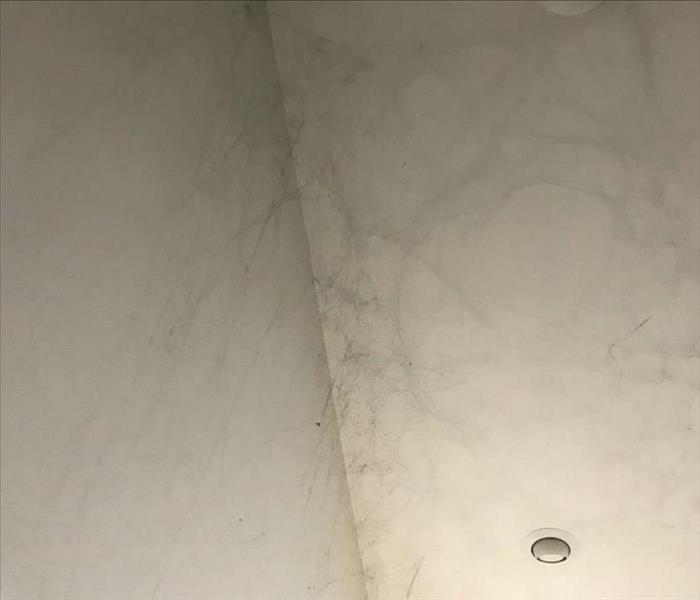What Are Soot Webs?
1/11/2021 (Permalink)
After a fire breaks out, you may be left with sticky soot webs
Soot webs are composed of small carbon particles formed by the improper burning of materials in a property. Soot includes several acids and also additives, metals, soils, and ashes. These particles create an unpleasant sight and an unpleasant odor. Soot webs come to life following the partial burning of materials, such as tar, wood, and other related fuels. Black soot webs are much more delicate than human fur, pollen. Soot particles are full of toxins, acids, metals, and substances.
During the burn, the soot extends to the whole building, sticking to the walls. As a result, soot's acidic characteristics will further affect your property and interior air quality. Soot can reach your property even though there wasn't fire damage directly in your building.
What causes soot webs?
Soot webs develop in low-circulation places and usually are a result of synthetic source-based fires. During a burn, the fire's heat travels into cooler places as the air attempts to develop balance. As the soot moves through the air with the heat, the soot contaminants pass through the air in these cooler regions with poor circulation and will accumulate in those places. Since soot is a product of incomplete combustion, the particulates help make it quite simple to make massive chains of soot webs.
A burning fire produces an excess of soot webs, but it's not the only cause of soot. Regularly lighting tiny candles in indoor conditions will cause soot webs to possibly build up. Poorly maintained fireplaces are responsible for the development of soot webs too.
What are soot webs made of?
Most normally recognized as black cobwebs, it is what occurs after fossil fuels such as wood, coal, and oil have not burned entirely. Many of the products in modern homes include plastics and other synthetic materials, causing soot webs when a fire breaks out. Homes in closely clustered neighborhoods next to a house fire sometimes get soot exposure even though the fire does not explicitly hit them. Soot comprises a range of acids and also additives, metals, soils, and ashes.
How do you clean soot webs?
Your home is likely to contain numerous additives, including chemicals, foams, bed sheets, wood items, and synthetic materials. Soot extracted from these products causes cleaning a challenging process. Even if the fire was minimal, soot contaminants could penetrate your entire home through the HVAC unit.
When cleaning soot, wearing personal protective equipment to shield the lungs, eyes, and skin is essential to reduce the chance of sensitivity to soot. Keep the windows open to improve airflow before you begin. Based on the extent of the area affected, precautions must be considered to avoid soot distribution. Cover everything that is not tainted by soot and build containment barriers to lock in any damaged soot areas. Utilizing air scrubbers and thermal fogging are some of the unique procedures often required to stabilize indoor environmental quality after a fire.
Dust cloths and household kitchen cleaners will not be enough to disinfect and remove unwanted soot! The removal of soot extensively demands professional instruments, experience, and skills. Experts will thoroughly disinfect the soot and odors of the whole house.
Contact the soot cleaning professionals
For complete smoke mitigation or fire damage repairs, please contact SERVPRO of North Fulton at (770) 992-2777. SERVPRO professionals are well trained by the IICRC and skilled in fire and smoke damage restoration. Our experts have sophisticated tools and expertise to restore the house to its pre-disaster state no matter if the damage is minimal or severe.





 24/7 Emergency Service
24/7 Emergency Service
